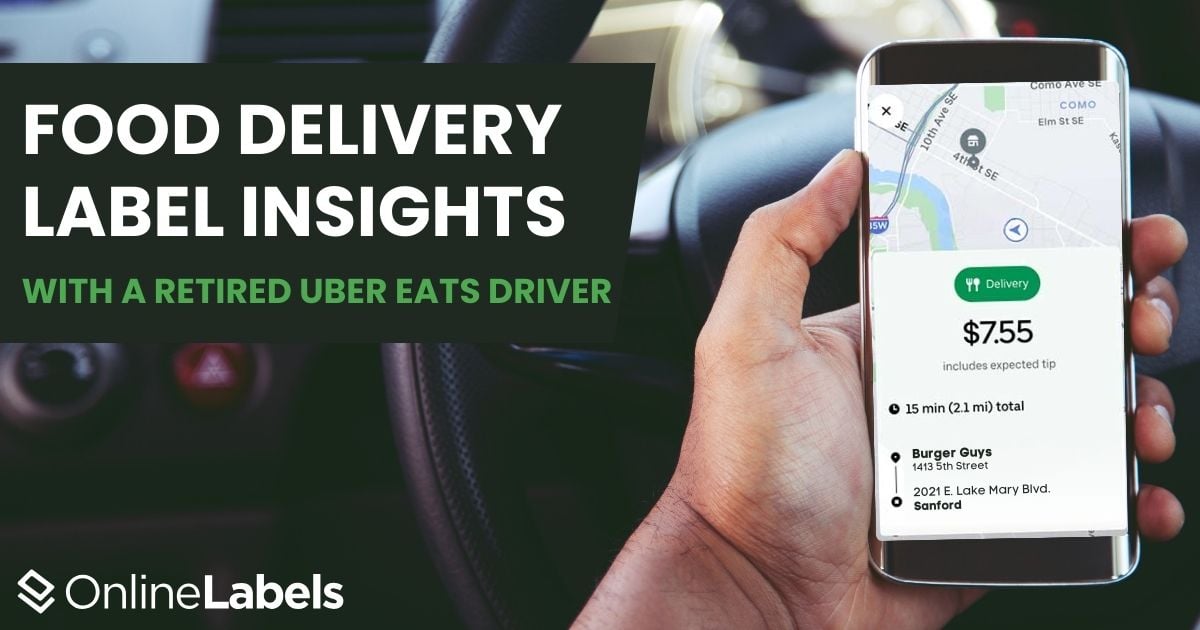Labeling Food Delivery Orders: Insights from a Retired Uber Eats Driver

Have you ever wondered what label guidelines an Uber Eats driver must follow?
Although being an Uber driver can be a fun experience with a profitable outcome, there are specific rules to ensure the food gets to the customer safely. In this article, I'll provide four tips on food safety requirements, including food label guidelines, all coming from a retired Uber Eats driver: myself!
What's it like being an Uber Eats driver?
My journey with Uber Eats began out of necessity. Over a year ago, having just graduated from college and starting my corporate life, I still wanted to earn some additional income for the future. That's when I decided to join Uber Eats.
After downloading the app and meeting the basic legal requirements, I was ready to deliver orders. However, it wasn't until I received my first two that I realized the job was more complex than anticipated. Every order had regulations, including food safety measures and delivery quality guidelines, which must be meticulously followed.
Over time, I developed a rhythm and became more efficient. I learned to optimize my routes, communicate effectively with customers, and handle multiple orders simultaneously. The job's flexibility allowed me to balance my corporate responsibilities while earning extra income, and it also provided me with a deeper appreciation for the logistics and effort involved in food delivery.
Here are four labeling takeaways from my Uber Eats delivery experience and how to apply them to your deliveries.
Take-Out Labels Must Stay on the Products at All Times
I started my Uber Eats journey in Raleigh, North Carolina, beginning with my first order from a Chinese restaurant located 20 minutes from my home. As I entered the restaurant, I was greeted with an unexpected sight: everything had a label! Each food item was carefully wrapped, with a label securing the package. Even the drink was sealed with a label to ensure it remained untouched until the customer opened it.
This moment marked my first significant lesson as an Uber Eats driver: the importance of food safety labels. These labels are not just for promotion; they represent care and responsibility toward delivering safe and uncontaminated food to customers. Ensuring that these labels remain intact during the delivery process is crucial for maintaining the integrity and safety of the food.
However, as I continued my journey, I understood that food safety labels conveyed that the product was intact. This helped build trust between the restaurant, the driver, and the client. From transporting delicate sushi rolls to handling piping-hot pizza, the theme was always the same: food safety and customer trust go hand in hand.
Food Allergy Labels Must Always be Included in Packages
As an Uber Eats driver, I went through many types of businesses, from regular pizza shops to a nitrogen ice cream business. Allergy warning labels were almost always present. Usually, when customers have allergies or food intolerances, they'll include a message or choose the appropriate options for their needs.
If the food items do not have the labels needed in the online order, the driver must communicate with the restaurant or facility to address the issue. This might involve verifying the ingredients with the kitchen staff or requesting that the correct labels be added to the packaging. This attention to detail helps prevent cross-contamination and ensures the food's safety during transit.
Keeps Labels with Company Information Visible and Safe
Some customers may make a one-time purchase and want to learn more about the restaurant. This is where QR codes and marketing stickers come in handy!
Most restaurants that use Uber Eats will include a QR code or links to their website and social media pages on their packaging. This will ensure that the customers know more about the company and potential discounts that may come with the package, among other inquiries.
QR codes and links also help direct customers to feedback forms or review sites. Keeping these labels clean and legible makes it easier for customers to provide valuable feedback, allowing the restaurant to improve its services and maintain a high rating on Uber Eats and other sites. This attention to detail shows you care about the customer's overall experience and reputation.
Use Thank You Stickers on Orders
Why not?
Uber Eats incentivizes restaurants to leave thank-you stickers on their packages. This helps the customer feel appreciated, connects them with the business and the carrier, and improves customer satisfaction.
These gestures humanize the transactional experience even though customers haven't visited the restaurant. Building a stronger bond between customers, businesses, and delivery drivers. This practice ensures customer satisfaction and encourages repeat business and positive word-of-mouth recommendations.
Using Labels on Food Delivery Orders
Labels and stickers are crucial in any restaurant's food delivery strategy. From safety labeling to promotional stickers, they can be the difference between building repeat business or getting a bad review. Pre-printed tamper-evident labels and dietary & allergy labels can help take the guesswork out of creating your design.



